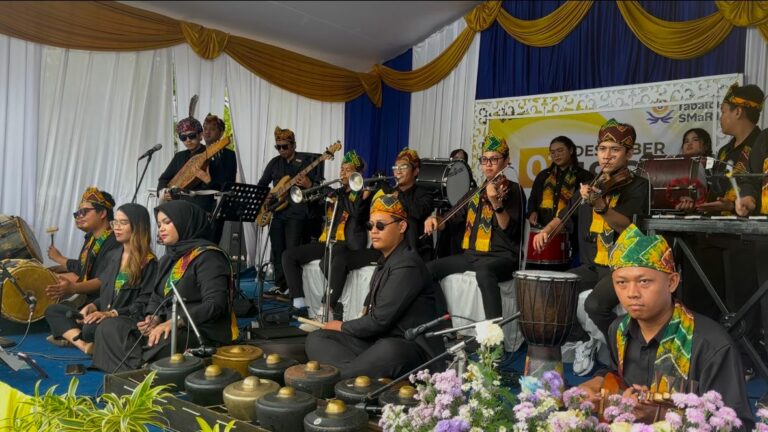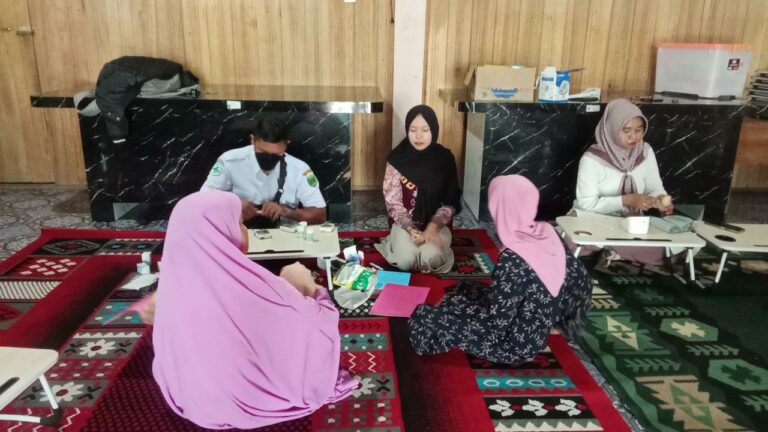Sungai Yang Ada Di Kalimantan – Mystical Rivers of Borneo
Kalimantan, the Indonesian part of the island of Borneo, is a land of rich biodiversity, exotic flora and fauna, and ancient cultures. It is also home to some of the amazing rivers in the world. The rivers of Kalimantan are much more than just a source of water. They are the lifeblood of the island, shaping its geology, ecology, and culture. Among these rivers, Sg. Mahakam, Sg. Barito, Sg. Kapuas, and Sg. Berau are some of the most famous and mystical rivers of Kalimantan. In this article, we will take you on a journey through these rivers, their history, ecology, and significance for the people and wildlife of Borneo.
Sg. Mahakam – The Longest River of Borneo
Sg. Mahakam is the longest river in Kalimantan, spanning over 980 km from the central highlands of Borneo to the Makassar Strait. The river is a vital artery for the people of East Kalimantan, providing water for irrigation, transportation, and other economic activities. The river basin is also home to diverse wildlife, including orangutans, gibbons, proboscis monkeys, freshwater dolphins, and various fish species.
Sg. Mahakam is also famous for its rich culture and history. The river was the center of the Kutai Kingdom, one of the oldest kingdoms in Indonesia, dating back to the 4th century. The remains of the ancient kingdom, including the impressive Mahakam Ulu archaeological site, can still be seen along the river.
The river is also known for its traditional boat racing festival, called “Sampan Balap.” The festival attracts thousands of visitors from around the world who come to witness the thrilling boat races and experience the local culture and cuisine of East Kalimantan.
Ecology and Threats
Sg. Mahakam is the lifeline for millions of people and wildlife in East Kalimantan. However, the river and its ecosystem are facing numerous threats, including deforestation, illegal mining, and pollution from industries and households. The destruction of forests and wetlands is causing massive erosion, sedimentation, and siltation, affecting the water quality and navigation of the river. The pollution from industries and households is contaminating the water and killing aquatic life. The fishing communities living along the river are also struggling to make ends meet due to the decline in fish populations.
The government and conservationists are working to mitigate these threats by implementing sustainable development projects, restoring degraded habitats, and enforcing anti-pollution measures. The local communities are also taking initiatives to protect the river by practicing eco-tourism and sustainable fishing practices.
Sg. Barito – The River of Rejang People
Sg. Barito is the second-longest river in Kalimantan, stretching over 900 km from the Meratus Mountains to the Java Sea. The river is significant for the indigenous Rejang people, who consider it a sacred river and the source of their culture and identity. The Rejang people have been living along the river for centuries, practicing traditional farming, fishing, and hunting.
The river is also important for the economy and ecology of Central Kalimantan, providing water for irrigation, transportation, and hydroelectric power. The river basin is home to various wildlife, including orangutans, clouded leopards, and crocodiles.
Ecology and Threats
Like Sg. Mahakam, Sg. Barito is facing numerous threats to its ecology and biodiversity. The main threats are deforestation, illegal mining, and pollution from industries and households. The destruction of forests and wetlands is causing massive landslide and soil erosion, affecting the water quality and navigation of the river. The pollution from industries and households is contaminating the water and killing aquatic life. The fishing communities living along the river are also struggling to make ends meet due to the decline in fish populations.
The government and conservationists are working to mitigate these threats by implementing sustainable development projects, restoring degraded habitats, and enforcing anti-pollution measures. The local communities are also taking initiatives to protect the river by practicing eco-tourism and sustainable fishing practices.
Sg. Kapuas – The Mighty River of West Kalimantan
Sg. Kapuas is the longest river in Indonesia, stretching over 1,141 km from the Muller Mountains to the South China Sea. The river is a vital resource for the people of West Kalimantan, providing water for irrigation, transportation, and hydroelectric power. The river basin is also home to diverse wildlife, including orangutans, hornbills, and various fish species.
Sg. Kapuas is also significant for its rich culture and history. The river was the center of the ancient Malay Kingdom of Sanggau, dating back to the 4th century. The remains of the kingdom, including the impressive ruins of the Sungai Batu archaeological site, can still be seen along the river.
The river is also famous for its annual “Kapuas River Festival,” which celebrates the diverse culture and heritage of West Kalimantan. The festival features various cultural performances, food stalls, eco-tourism activities, and a boat parade.
Ecology and Threats
Despite its ecological and cultural significance, Sg. Kapuas is facing numerous threats to its biodiversity and high conservation value. The main threats include deforestation, illegal mining, and pollution from industries and households. The destruction of rainforests and wetlands is causing massive erosion, sedimentation, and siltation, affecting the water quality and navigation of the river. The pollution from industries and households is contaminating the water and killing aquatic life. The fishing communities living along the river are also struggling to make ends meet due to the decline in fish populations.
The government and conservationists are working to mitigate these threats by implementing sustainable development projects, restoring degraded habitats, and enforcing anti-pollution measures. The local communities are also taking initiatives to protect the river by practicing eco-tourism and sustainable fishing practices.
Sg. Berau – The Frontier River of East Kalimantan
Sg. Berau is a significant river in East Kalimantan, stretching over 500 km from the highlands to the Sulawesi Sea. The river is the lifeline for the indigenous Berau people, who have been living along its banks for centuries, practicing traditional farming, fishing, and hunting. The river and its delta are also critical habitats for various wildlife, including saltwater crocodiles, dugongs, sea turtles, and various fish species.
Sg. Berau is also significant for its rich culture and history. The river was a strategic trade route for the Malay sultanates and the Dutch East India Company in the 17th century. The remains of the ancient sultanates, including the impressive Sambaliung Palace, can still be seen along the river.
The river is also famous for its eco-tourism activities, such as bird-watching, snorkeling, and diving. The diverse coral reefs and mangrove forests along the river create unique ecosystems that attract tourists from around the world.
Ecology and Threats
Sg. Berau is facing various threats to its ecology and biodiversity. The main threats include deforestation, illegal logging, and overfishing. The destruction of forests and wetlands is causing massive erosion, sedimentation, and siltation, affecting the water quality and navigation of the river. The overfishing of various fish species is depleting the fish populations, causing a decline in the livelihoods of the fishing communities.
The government and conservationists are working to mitigate these threats by implementing sustainable development projects, restoring degraded habitats, and enforcing anti-logging and anti-poaching measures. The local communities are also taking initiatives to protect the river by practicing eco-tourism and sustainable fishing practices.
FAQs
1) What is the significance of the rivers of Kalimantan?
The rivers of Kalimantan are significant for their cultural, ecological, and economic value. They shape the landscape, culture, and livelihoods of the people and wildlife of Borneo.
2) What are the famous rivers of Kalimantan?
The famous rivers of Kalimantan include Sg. Mahakam, Sg. Barito, Sg. Kapuas, and Sg. Berau.
3) What are the threats to the rivers of Kalimantan?
The main threats to the rivers of Kalimantan are deforestation, illegal mining, pollution from industries and households, overfishing, and climate change.
4) How are the government and local communities protecting the rivers of Kalimantan?
The government and conservationists are implementing sustainable development projects, restoring degraded habitats, and enforcing anti-pollution measures and anti-logging and anti-poaching measures. The local communities are practicing eco-tourism and sustainable fishing practices.
5) What are the eco-tourism activities available along the rivers of Kalimantan?
The eco-tourism activities available along the rivers of Kalimantan include boat tours, bird-watching, snorkeling, and diving in coral reefs and mangrove forests. The festivals and cultural performances also provide unique experiences for tourists.



